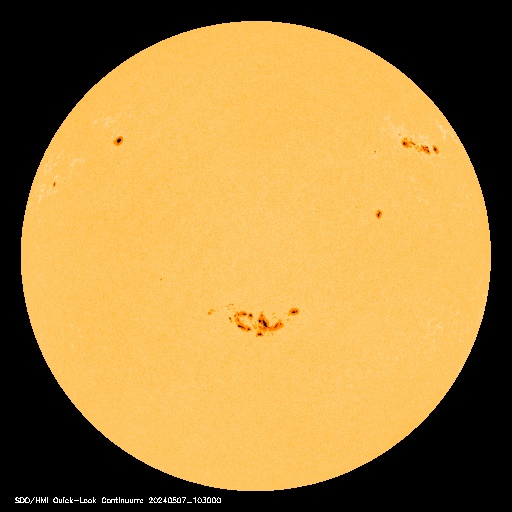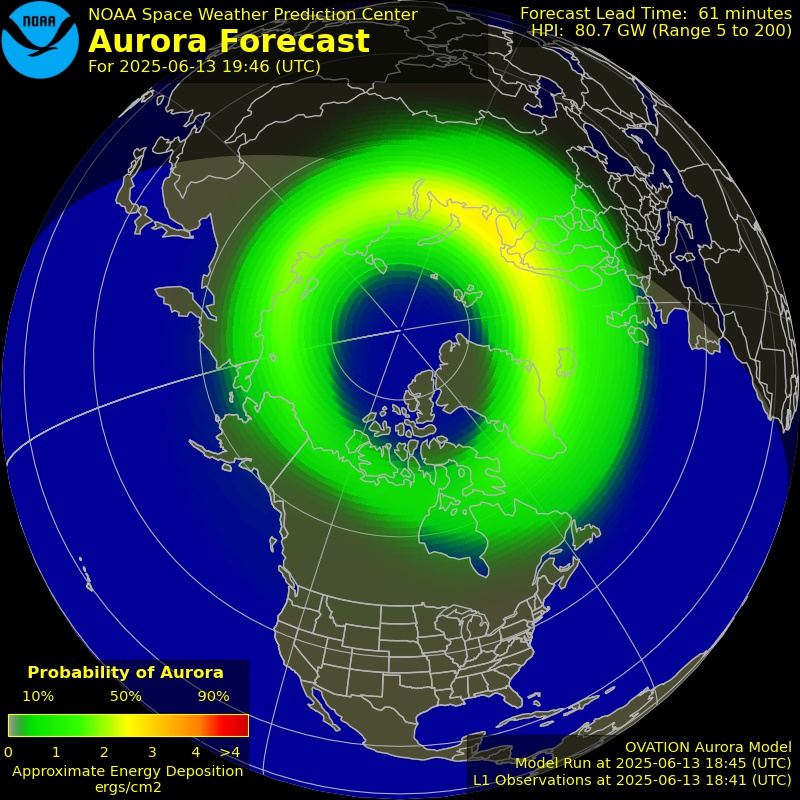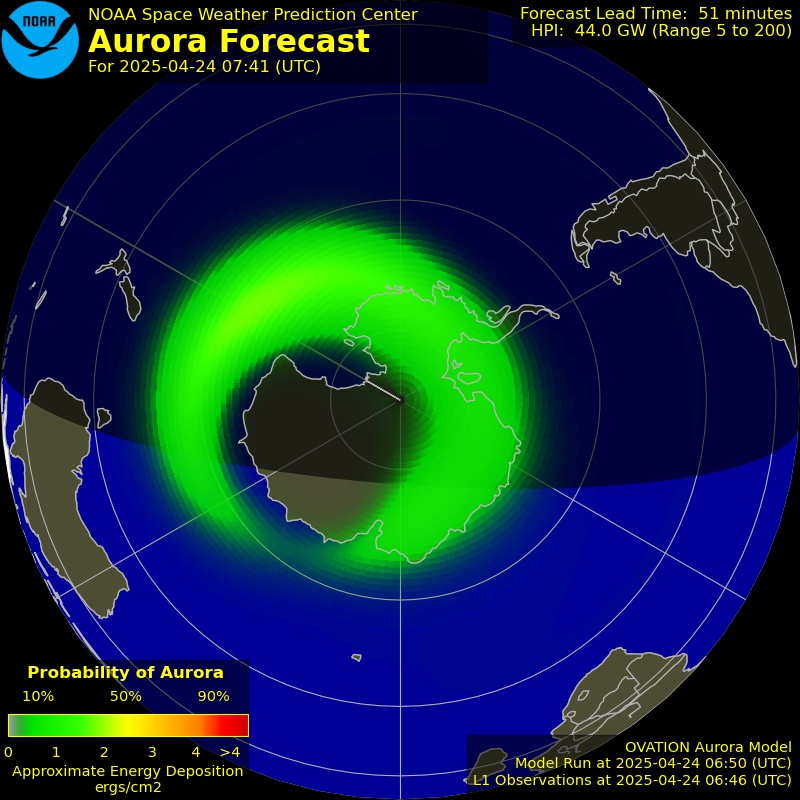 The Aurora (also known as the Northern Lights, aurora borealis or auror australis) is a luminous glow of the upper atmosphere which is caused by energetic particles that enter the atmosphere from above, primarily from the solar wind.
The Aurora (also known as the Northern Lights, aurora borealis or auror australis) is a luminous glow of the upper atmosphere which is caused by energetic particles that enter the atmosphere from above, primarily from the solar wind.
These energetic particles are mostly electrons, but protons also make aurora. The electrons travel along magnetic field lines. The Earth’s magnetic field looks like that of a dipole magnet where the field lines are coming out and going into the Earth near the poles. The auroral electrons are guided to the high latitude atmosphere.
As they penetrate into the upper atmosphere, the chance of colliding with an atom or molecule increases the deeper they go. Once a collision takes place, the atom or molecule takes some of the energy of the energetic particle and stores it as internal energy while the electron goes on with a reduced speed. The process of storing energy in a molecule or atom is called “exciting” the atom. An excited atom or molecule can return to the non-excited state (ground state) by sending off a photon, i.e. by making light.
The composition and density of the atmosphere and the altitude of the aurora determine the possible light emissions and therefor the colour of an aurora.
When an excited atom or molecule returns to the ground state, it sends out a photon with a specific energy. This energy depends on the type of atom and on the level of excitement, and we perceive the energy of a photon as colour. The upper atmosphere consists of air just like the air we breathe. At very high altitudes there is atomic oxygen in addition to normal air, which is made up of molecular nitrogen and molecular oxygen.
The energetic electrons in an aurora are strong enough to occasionally split the molecules of the air into nitrogen and oxygen atoms. The photons that come out of an aurora have therefore the signature colours of nitrogen and oxygen molecules and atoms. Oxygen atoms, for example, strongly emit photons in two typical colors: green and red. The red is a brownish red that is at the limit of what the human eye can see, and although the red auroral emission is often very bright, we can barely see it.
The green emission from oxygen atoms has a peculiar thing about it: usually an excited atom or molecule returns to the ground state right away, and the emission of a photon is a matter of microseconds or less. The oxygen atom, however, takes its time. Only after about a 3/4 second does the excited atom return to the ground state to emit the green photon. For the red photon it takes almost 2 minutes! If the atom happens to collide with another air particle during this time, it might just turn its excitation energy over to the collision partner, and thus never radiate the photon.
Collisions are more likely when the atmospheric gas is dense, so they happen more often the lower down we go. This is why the red color of oxygen only appears at the very top of an aurora, where collisions between air molecules and atoms are rare. Below about 100 km (60 miles) altitude even the green color doesn’t get a chance. This happens when we see a purple lower border: the green emission gets quenched by collisions, and all that is left is the blue/red mixture of the molecular nitrogen emission.
| Solar System Links & Resources | |||||
| Aurora Links & Resources | ||||||||||||||||||
|
|
||||||||||||||||||
| Aurora eBooks & Articles | |||||
|
|||||
Aurora Videos:
[tubepress mode=”tag” tagValue=”Aurora borealis australis”]
Filed under: Astronomy & Space Weather






















Addendum:
Generation of large scale electric fields in coronal flare circuits
Submission August 6, 2009
“A large number of energetic electrons are generated during solar flares. They carry a substantial part of the flare released energy but how these electrons are created is not fully understood yet. This paper suggests that plasma motion in an active region in the photosphere is the source of large electric currents. These currents can be described by macroscopic circuits. Under special circumstances currents can establish in the corona along magnetic field lines. The energy released by these currents when moderate assumptions for the local conditions are made, is found be comparable to the flare energy. ”
http://arxiv.org/abs/0908.0813